How much does it cost to feed a horse?
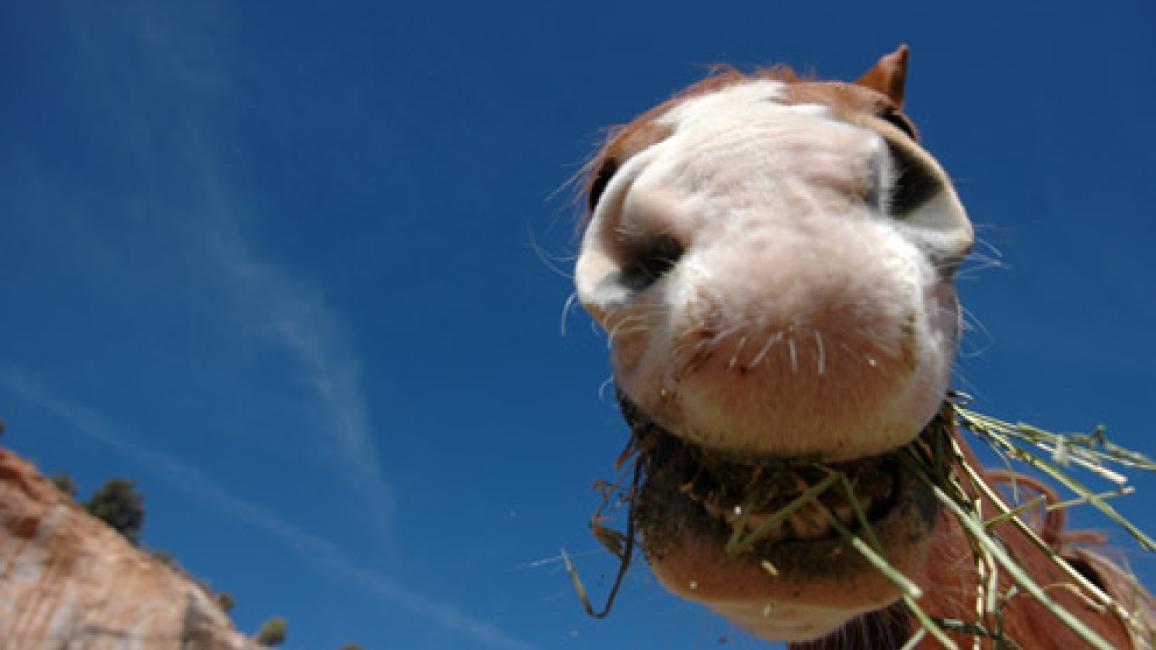
Ever wonder how much it costs to feed a horse? Lots of people dream of adopting a horse, yet they hold back for fear they’ll have to hawk family heirlooms at annual garage sales in order to foot the grocery bill. Some people guess high; others guess low. And to make matters trickier, the actual cost is not at all the same from one place to another. "The cost varies tremendously based upon where you live," explains Best Friends horse manager Jen Reid. For example, the price of a bale of hay near Best Friends Animal Sanctuary in Kanab, Utah, is around $6. That same bale of hay in say Phoenix, Arizona, could run $9 or $10.
Annual cost to feed a horse
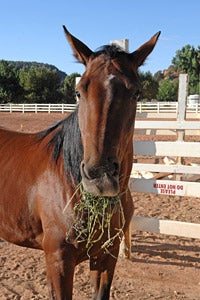
Sasha
In other words, it certainly behooves you to do a little homework before taking the plunge and adopting! But for sake of a rough estimate, here’s a figure to run with for those who have no idea what it takes to keep dinner on the table for a horse. In Kanab, for an average healthy horse with no special needs or extra bells and whistles, Jen estimates the grocery bill is around $2,000 annually — or roughly $167 a month per horse. Just think how long a guinea pig could eat on that!
Saving money on horse feed
Obviously, not everybody is in the market for a horse as a companion animal. Yet for those who can foot the expense, there are a few money-saving tips to ease the costs at least a little. The best and simplest money-saver, by far, is to live someplace where your horse can graze on pasture. OK, OK, so maybe that’s sort of like telling a friend that the secret to getting rich fast is to win the lottery, but still. If you have land and access to pasture, obviously the grocery bills are going to drop drastically. For the rest of us, thank goodness, there are additional strategies to trim cost without skimping on nutrition.
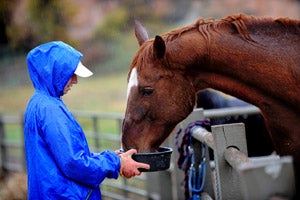
Jet
Like many other products or goods, hay typically costs less if you can afford to buy in bulk. There’s a catch, however. You need to have a way to keep that large order of hay protected from the weather, or it’ll get ruined. Either buying a large quantity of hay on your own or going in with some friends to split a big order can shave costs significantly.
Slow-feeding systems can also save money, in that they teach a horse not to gobble down more food than they need. Slow-feeders more closely replicate life in the wild, where a horse will spend a significant portion of their day foraging for food.
Another strategy, if you have the means to do so and have access, is to drive out to the hay fields and pick up the hay right out of the field. If the hay farmers don’t have to do the work of handling and delivering for you, they are sometimes willing to cut you a price break.
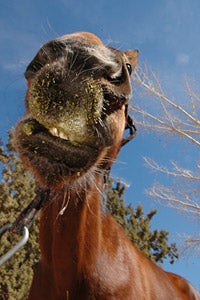
Felix
One more cost-saver deals not so much with food, but supplementation. Not all hay is created equal. Certain key nutrients and vitamins are often missing, which in turn means horses will need supplementation. If you have your hay tested, however, you can find out exactly what the hay lacks. Then, you can supplement only that vitamin or vitamins, as opposed to all of them. A simple way to have your hay tested is to send it to your local state college agriculture extension office.
Proper horse nutrition
Speaking of hay, that brings up another good point about horses and nutrition. There are a lot of misconceptions about what constitutes proper nutrition for a horse. "The biggest mistake people make," explains Best Friends veterinarian Dr. Tara Timpson "is feeding too much concentrated feed (grains) and not focusing on forage — good quality hay, as the primary nutrient source."
A horse may light up with excitement when you hand over a bucket of oats, but that doesn’t mean it’s the best thing for them. "I would encourage people to focus on good-quality hay source for their horses and avoid concentrates like grain unless the horses are involved in high levels of performance and their energy needs can’t be met by forage alone," says Dr. Tara.
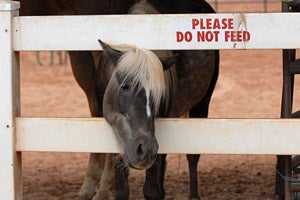
Sira
Another common pitfall is the lure of a good apple or carrot. It might be helpful to think of such niceties as something like candy bars for a horse. As a now-and-then kind of treat, they’re usually fine, but they shouldn’t be given often. At Best Friends, in fact, many horses can’t have apples or carrots at all because they have difficulty chewing, or they can’t handle the sugars.
Remember that monthly figure mentioned above, regarding an average healthy horse without any bells and whistles? Well, there are plenty of horses at Best Friends, and anywhere else, who do have special dietary needs.
Each horse at the Sanctuary has his or her own unique dietary program, from special food for horses who can’t chew easily, to food tailored for insulin-resistant horses, to specialty foods and specialty supplements for horses with additional medical problems and a multitude of other needs.
"You can’t feed them all the same," points out Jen. There’s simply no single, easy solution that works for every horse. Even for people lucky enough to live where pasture is an option, obesity can become a problem in a hurry.
The bottom line, then, is that good nutrition for horses (as with any animal) takes careful monitoring and evaluation every step of the way.
Photographs by Best Friends photographers